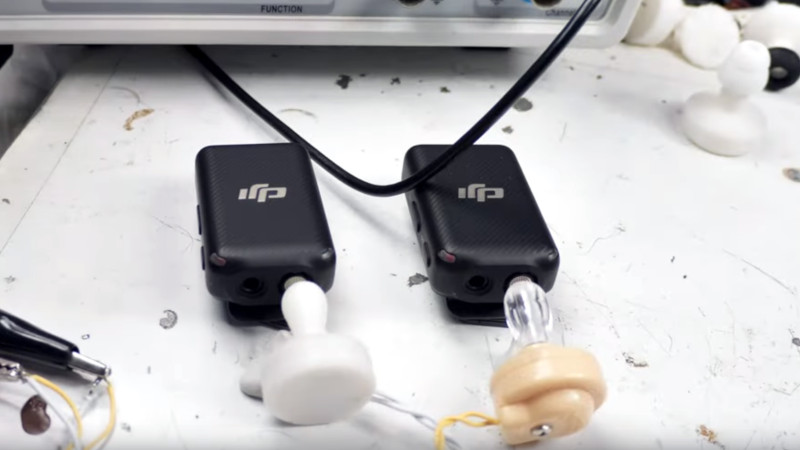A staple of starting off in electronics ion years past was the crystal set radio, an extremely simple AM radio receiver with little more than a tuned circuit and a point contact diode as its components. Point contact diodes have become difficult to find but can be replaced with a cats whisker type detector, but what about listening to the resulting audio? These circuits require a very high impedance headphone, which was often supplied by a piezoelectric crystal earpiece. [Tsbrownie] takes a moment to build a replacement for this increasingly hard to find part.
It shouldn’t have come as a surprise, but we were still slightly taken aback to discover that inside these earpieces lies the ubiquitous piezoelectric buzzer element. Thus given a 3D-printed shell to replace the one on the original, it’s a relatively simple task to twist up a set of wires and solder them on. The result is given a test, and found to perform just as well as the real thing, in fact a little louder.
In one sense this is such a simple job, but in another it opens up something non-obvious for anyone who needs a high impedance earpiece. The days of the crystal radios and rudimentary transistor hearing aids these parts were once the main target for may both have passed, but just in case there’s any need for one elsewhere, now we can fill it. Take a look at the video, below the break.
Fancy trying a crystal radio? We’ve got you covered.
















Very interesting project. Just a note on twisting wires together. I learnt long ago (about 70 years !) to pull on the wires slightly before releasing them from the drill. This seems to set the wires and stops the wires untwisting to some extent. I still have my 2000 ohm head phones from that era.
When I twist short run wires or 2 audio cables I twist both wires separately in the same direction and they naturally come together whilst hanging down and don’t untwist or need to be helped to stay together. Start with a piece of tape if needed. Makes for a neater audio system rats nest. Pairs of cables instead of total chaos. I would assume that’s the way they did early line cords and drop lines, two spools both being spun whilst paying off.
I built my first crystal set in the late 1940s. My bedsprings were the antenna.
The same here – depending on how I was lying I could tune in to different stations…
ion? :)
I have also liked the trick used to make the twisted wire.
this is very cool. i built piezo elements into a cheap pair of hearing protectors a while back bc at the time i lived in a very noisy house. these are much more compact, well done.
Rochelle Salt was once used for such.
Cool project, but I can’t help but must tell that these ear pieces never had been “ideal”.
The older high-impedance headphones from WW1/WW2 were more sensitive, louder.
Real crystal radio enthusiasts use these old school headphones, rather than these piezos.
Anyway, just saying. It’s not meant as criticism, but as a tip to detector radio fans! I’m glad for these ear pieces, too! 😃
Came to say something similar. When I was a kid I inherited an old pair of Brandes haeadphones. Bakelite ear cups, very thin spring-steel diaphragms about 2″ in diameter, and a dual coil on each side. These were sensitive enough that even on hot humid summer days when pretty much the only static electricity was in the clouds, I could hear a click any time I simply touched one of the leads. I’m not sure what happened to them, but I wish I still had them…
“Point contact diodes have become difficult to find but can be replaced with a cats whisker type detector”
Use a schottky diode or ultrfast rectifier diode
Preferably with the lowest forward voltage drop you can find, throw an op Amp buffer and use regular headphones
Throw another 556 timer with another op Amp and build a tunable receiver, vfo, comparator and demodulator